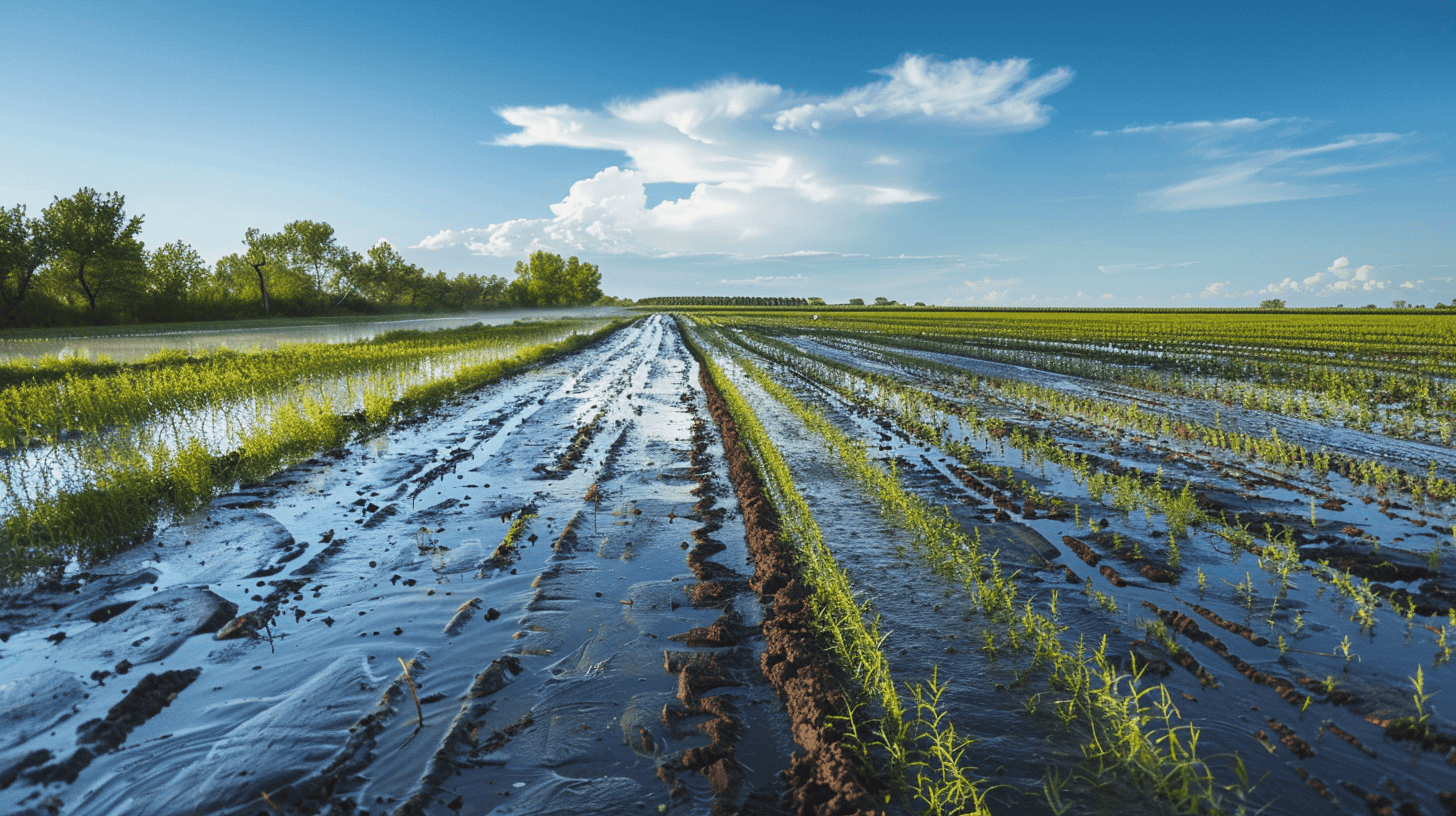
Last May, it was particularly rainy in the Dutch region of North Brabant. The region has not seen such persistent rainfall in a century, with three times the usual amount for May. The saturated soil cannot absorb more water, and agricultural fields are completely flooded, leaving crops submerged and machinery bogged down. This extreme weather starkly contrasts last year’s drought concerns, showcasing the urgent need for innovative water management solutions.
Why this is important:
Extreme weather events, such as May rainfalls, are becoming the new normal. Groundwater management needs new solutions to track and predict soil water concentrations.
Technological advancements in tracking and forecasting
Understanding weather phenomena is crucial for proactive water management. The PHARA project, a collaboration of Dutch institutions and companies, aims to develop a 3D phased array weather radar – a pioneering step in Europe. This technology is designed to study the intricate processes of cloud particles, improving the prediction of extreme weather events. The potential benefits are manifold, from optimizing energy production in wind parks to ensuring safer navigation in busy shipping harbors. With climate change heightening the risk of severe weather, such advancements could be invaluable for the Netherlands, a nation already grappling with the cost of weather-related damages.
Meanwhile, on the ground, StabiAlert, a Dutch company in Groningen, is leveraging technology to monitor subsidence. Their latest innovation, the CrackR sensor, measures crack movements in 3D and transmits data hourly through an app using the 5G network. This digital tool could be a game-changer for infrastructure and housing, allowing for timely maintenance decisions and potentially mitigating the risks of land subsidence linked to high groundwater levels.
Hybrid AI: disrupting groundwater management
Adapting to this new normal requires innovative solutions. Hybrid machine learning (ML) models, blending various AI techniques, offer significant potential in managing groundwater resources. By integrating data from multiple sources, these models can provide a more comprehensive understanding of complex groundwater systems.
Groundwater management is a multifaceted challenge, especially in a country like the Netherlands, where water is both a life-giving resource and a potential threat. The work of Mojtaba Zaresefat and Reza Derakhshani from Utrecht University highlights the critical role of AI in assessing groundwater potential, predicting contaminants, and informing management decisions. Applying these sophisticated techniques could transform the Dutch approach to water management, offering a data-driven way to navigate the challenges posed by extreme weather events.

Policy and planning in the face of climatic extremes
Technological innovation is but one part of the equation; policy and planning play a crucial role in managing the impacts of high groundwater levels. The ‘Water and Soil Preeminent’ policy recognizes the need for future-proof construction and the strategic organization of floodplains as nature reserves. By de-fragmenting land usage, the Netherlands can adjust water levels to specific needs, alleviating conflicts between water use for agriculture, housing, and nature conservation.
Experts like Maarten Kleinhans, Esther Stouthamer, and Niko Wanders from Utrecht University advocate for a required climate test on construction projects to ensure they are future-proof. Integrating such measures into the law could prevent irreversible land subsidence and ensure the country’s buildings can withstand the evolving climate challenges. As sea levels rise and extreme weather events become more frequent, a comprehensive approach combining policy, technology, and planning is essential for the Netherlands to keep its feet dry.
Collaborative efforts to tame the deluge
On a more immediate level, the collaborative efforts of water management authorities, such as Waterschap De Dommel, to control flooding are of paramount importance. By lowering sluices to accelerate water runoff and cleaning out culverts, these organizations are working to mitigate the immediate impacts of flooding on agriculture. However, the sheer volume of rainfall has overwhelmed traditional measures, highlighting the need for more robust and innovative solutions to manage water excesses.

